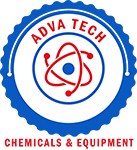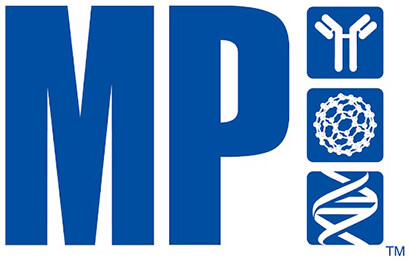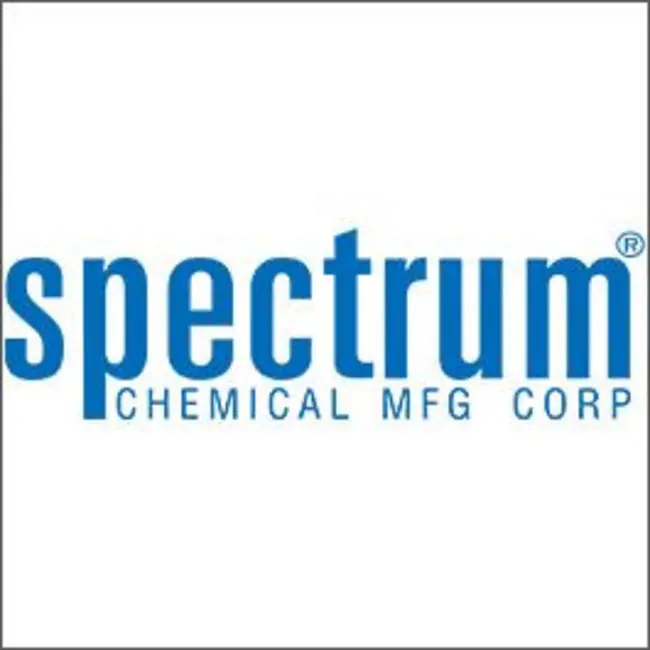IVD raw material
Showing 1–50 of 476 results
-
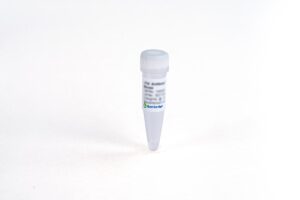
25-OH VD2&D3 (2E16), mAb, Mouse
$450.23 Add to cart View Product DetailsVitamin D plays an important role in calcium homeostasis and metabolism. Vitamin D3 and vitamin D2 are two forms of vitamin D in human body, both of which are contained in only a few foods. The deficiency of vitamin D in human body can cause a threat of diseases such as osteomalacia, rickets and diabetes. 25-OH Vitamin D2 and 25-OH Vitamin D3 as vitamin D metabolites are measured in human serum to evaluate vitamin D level. Vitamin D supplements are considered as an effective way to treat or to prevent the diseases.
-

25-OH VD2&D3 (2E16), mAb, Mouse
$4,502.25 Add to cart View Product DetailsVitamin D plays an important role in calcium homeostasis and metabolism. Vitamin D3 and vitamin D2 are two forms of vitamin D in human body, both of which are contained in only a few foods. The deficiency of vitamin D in human body can cause a threat of diseases such as osteomalacia, rickets and diabetes. 25-OH Vitamin D2 and 25-OH Vitamin D3 as vitamin D metabolites are measured in human serum to evaluate vitamin D level. Vitamin D supplements are considered as an effective way to treat or to prevent the diseases.
-

25-OH VD2&D3 (2E16), mAb, Mouse
$38,295.00 Add to cart View Product DetailsVitamin D plays an important role in calcium homeostasis and metabolism. Vitamin D3 and vitamin D2 are two forms of vitamin D in human body, both of which are contained in only a few foods. The deficiency of vitamin D in human body can cause a threat of diseases such as osteomalacia, rickets and diabetes. 25-OH Vitamin D2 and 25-OH Vitamin D3 as vitamin D metabolites are measured in human serum to evaluate vitamin D level. Vitamin D supplements are considered as an effective way to treat or to prevent the diseases.
-

25-OH VD2&D3 (D23HC)
$450.23 Add to cart View Product DetailsVitamin D plays an important role in calcium homeostasis and metabolism. Vitamin D3 and vitamin D2 are two forms of vitamin D in human body, both of which are contained in only a few foods. The deficiency of vitamin D in human body can cause a threat of diseases such as osteomalacia, rickets and diabetes. 25-OH Vitamin D2 and 25-OH Vitamin D3 as vitamin D metabolites are measured in human serum to evaluate vitamin D level. Vitamin D supplements are considered as an effective way to treat or to prevent the diseases.
-

25-OH VD2&D3 (D23HC)
$4,502.25 Add to cart View Product DetailsVitamin D plays an important role in calcium homeostasis and metabolism. Vitamin D3 and vitamin D2 are two forms of vitamin D in human body, both of which are contained in only a few foods. The deficiency of vitamin D in human body can cause a threat of diseases such as osteomalacia, rickets and diabetes. 25-OH Vitamin D2 and 25-OH Vitamin D3 as vitamin D metabolites are measured in human serum to evaluate vitamin D level. Vitamin D supplements are considered as an effective way to treat or to prevent the diseases.
-

25-OH VD2&D3 (D23HC)
$38,295.00 Add to cart View Product DetailsVitamin D plays an important role in calcium homeostasis and metabolism. Vitamin D3 and vitamin D2 are two forms of vitamin D in human body, both of which are contained in only a few foods. The deficiency of vitamin D in human body can cause a threat of diseases such as osteomalacia, rickets and diabetes. 25-OH Vitamin D2 and 25-OH Vitamin D3 as vitamin D metabolites are measured in human serum to evaluate vitamin D level. Vitamin D supplements are considered as an effective way to treat or to prevent the diseases.
-

25-OH VD3 (32F9C4), mAb, Mouse
$188.89 Add to cart View Product DetailsVitamin D plays an important role in calcium homeostasis and metabolism. Vitamin D3 and vitamin D2 are two forms of vitamin D in human body, both of which only a few foods contain. The deficiency of vitamin D in human body can cause a threat of diseases such as osteomalacia, rickets and diabetes. 25-OH Vitamin D2 and 25-OH Vitamin D3 as vitamin D metabolites are measured in human serum to evaluate vitamin D level. Vitamin D supplements are considered as an effective way to treat or to prevent the diseases.
-

25-OH VD3 (32F9C4), mAb, Mouse
$450.23 Add to cart View Product DetailsVitamin D plays an important role in calcium homeostasis and metabolism. Vitamin D3 and vitamin D2 are two forms of vitamin D in human body, both of which only a few foods contain. The deficiency of vitamin D in human body can cause a threat of diseases such as osteomalacia, rickets and diabetes. 25-OH Vitamin D2 and 25-OH Vitamin D3 as vitamin D metabolites are measured in human serum to evaluate vitamin D level. Vitamin D supplements are considered as an effective way to treat or to prevent the diseases.
-

25-OH VD3 (32F9C4), mAb, Mouse
$4,502.25 Add to cart View Product DetailsVitamin D plays an important role in calcium homeostasis and metabolism. Vitamin D3 and vitamin D2 are two forms of vitamin D in human body, both of which only a few foods contain. The deficiency of vitamin D in human body can cause a threat of diseases such as osteomalacia, rickets and diabetes. 25-OH Vitamin D2 and 25-OH Vitamin D3 as vitamin D metabolites are measured in human serum to evaluate vitamin D level. Vitamin D supplements are considered as an effective way to treat or to prevent the diseases.
-

25-OH VD3 (32F9C4), mAb, Mouse
$38,295.00 Add to cart View Product DetailsVitamin D plays an important role in calcium homeostasis and metabolism. Vitamin D3 and vitamin D2 are two forms of vitamin D in human body, both of which only a few foods contain. The deficiency of vitamin D in human body can cause a threat of diseases such as osteomalacia, rickets and diabetes. 25-OH Vitamin D2 and 25-OH Vitamin D3 as vitamin D metabolites are measured in human serum to evaluate vitamin D level. Vitamin D supplements are considered as an effective way to treat or to prevent the diseases.
-

25-OH Vitamin D3, BSA Conjugated
$200.10 Add to cart View Product DetailsVitamin D plays an important role in calcium homeostasis and metabolism. Vitamin D3 and vitamin D2 are two forms of vitamin D in human body, both of which only a few foods contain. The deficiency of vitamin D in human body can cause a threat of diseases such as osteomalacia, rickets and diabetes. 25-OH Vitamin D2 and 25-OH Vitamin D3 as vitamin D metabolites are measured in human serum to evaluate vitamin D level. Vitamin D supplements are considered as an effective way to treat or to prevent the diseases.
-

25-OH Vitamin D3, BSA Conjugated
$450.23 Add to cart View Product DetailsVitamin D plays an important role in calcium homeostasis and metabolism. Vitamin D3 and vitamin D2 are two forms of vitamin D in human body, both of which only a few foods contain. The deficiency of vitamin D in human body can cause a threat of diseases such as osteomalacia, rickets and diabetes. 25-OH Vitamin D2 and 25-OH Vitamin D3 as vitamin D metabolites are measured in human serum to evaluate vitamin D level. Vitamin D supplements are considered as an effective way to treat or to prevent the diseases.
-

25-OH Vitamin D3, BSA Conjugated
$4,502.25 Add to cart View Product DetailsVitamin D plays an important role in calcium homeostasis and metabolism. Vitamin D3 and vitamin D2 are two forms of vitamin D in human body, both of which only a few foods contain. The deficiency of vitamin D in human body can cause a threat of diseases such as osteomalacia, rickets and diabetes. 25-OH Vitamin D2 and 25-OH Vitamin D3 as vitamin D metabolites are measured in human serum to evaluate vitamin D level. Vitamin D supplements are considered as an effective way to treat or to prevent the diseases.
-

25-OH Vitamin D3, BSA Conjugated
$38,295.00 Add to cart View Product DetailsVitamin D plays an important role in calcium homeostasis and metabolism. Vitamin D3 and vitamin D2 are two forms of vitamin D in human body, both of which only a few foods contain. The deficiency of vitamin D in human body can cause a threat of diseases such as osteomalacia, rickets and diabetes. 25-OH Vitamin D2 and 25-OH Vitamin D3 as vitamin D metabolites are measured in human serum to evaluate vitamin D level. Vitamin D supplements are considered as an effective way to treat or to prevent the diseases.
-

25-OH Vitamin D3, HRP Conjugated
$200.11 Add to cart View Product DetailsVitamin D plays an important role in calcium homeostasis and metabolism. Vitamin D3 and vitamin D2 are two forms of vitamin D in human body, both of which only a few foods contain. The deficiency of vitamin D in human body can cause a threat of diseases such as osteomalacia, rickets and diabetes. 25-OH Vitamin D2 and 25-OH Vitamin D3 as vitamin D metabolites are measured in human serum to evaluate vitamin D level. Vitamin D supplements are considered as an effective way to treat or to prevent the diseases.
-

25-OH Vitamin D3, HRP Conjugated
$450.23 Add to cart View Product DetailsVitamin D plays an important role in calcium homeostasis and metabolism. Vitamin D3 and vitamin D2 are two forms of vitamin D in human body, both of which only a few foods contain. The deficiency of vitamin D in human body can cause a threat of diseases such as osteomalacia, rickets and diabetes. 25-OH Vitamin D2 and 25-OH Vitamin D3 as vitamin D metabolites are measured in human serum to evaluate vitamin D level. Vitamin D supplements are considered as an effective way to treat or to prevent the diseases.
-

25-OH Vitamin D3, HRP Conjugated
$4,502.25 Add to cart View Product DetailsVitamin D plays an important role in calcium homeostasis and metabolism. Vitamin D3 and vitamin D2 are two forms of vitamin D in human body, both of which only a few foods contain. The deficiency of vitamin D in human body can cause a threat of diseases such as osteomalacia, rickets and diabetes. 25-OH Vitamin D2 and 25-OH Vitamin D3 as vitamin D metabolites are measured in human serum to evaluate vitamin D level. Vitamin D supplements are considered as an effective way to treat or to prevent the diseases.
-

25-OH Vitamin D3, HRP Conjugated
$38,295.00 Add to cart View Product DetailsVitamin D plays an important role in calcium homeostasis and metabolism. Vitamin D3 and vitamin D2 are two forms of vitamin D in human body, both of which only a few foods contain. The deficiency of vitamin D in human body can cause a threat of diseases such as osteomalacia, rickets and diabetes. 25-OH Vitamin D2 and 25-OH Vitamin D3 as vitamin D metabolites are measured in human serum to evaluate vitamin D level. Vitamin D supplements are considered as an effective way to treat or to prevent the diseases.
-

AFP (RC6A), mAb, Mouse
$104.36 Add to cart View Product DetailsAlpha-Fetoprotein (AFP) is a glycoprotein, normally produced during fetal development by the hepatocytes. Its level is increased in pregnant women. AFP is an important marker for the diagnosis of hepatocellular carcinoma.
-

AFP (RC6A), mAb, Mouse
$1,043.63 Add to cart View Product DetailsAlpha-Fetoprotein (AFP) is a glycoprotein, normally produced during fetal development by the hepatocytes. Its level is increased in pregnant women. AFP is an important marker for the diagnosis of hepatocellular carcinoma.
-

AFP (RC6A), mAb, Mouse
$8,883.75 Add to cart View Product DetailsAlpha-Fetoprotein (AFP) is a glycoprotein, normally produced during fetal development by the hepatocytes. Its level is increased in pregnant women. AFP is an important marker for the diagnosis of hepatocellular carcinoma.
-

AFP (RC6B), mAb, Mouse
$104.36 Add to cart View Product DetailsAlpha-Fetoprotein (AFP) is a glycoprotein, normally produced during fetal development by the hepatocytes. Its level is increased in pregnant women. AFP is an important marker for the diagnosis of hepatocellular carcinoma.
-

AFP (RC6B), mAb, Mouse
$1,043.63 Add to cart View Product DetailsAlpha-Fetoprotein (AFP) is a glycoprotein, normally produced during fetal development by the hepatocytes. Its level is increased in pregnant women. AFP is an important marker for the diagnosis of hepatocellular carcinoma.
-

AFP (RC6B), mAb, Mouse
$8,883.75 Add to cart View Product DetailsAlpha-Fetoprotein (AFP) is a glycoprotein, normally produced during fetal development by the hepatocytes. Its level is increased in pregnant women. AFP is an important marker for the diagnosis of hepatocellular carcinoma.
-

ALK (4A4), mAb, Mouse
$329.48 Add to cart View Product DetailsAnaplastic lymphoma kinase (ALK) known as ALK tyrosine kinase receptor or CD246, is a tyrosine kinase receptor. ALK is an important biomarker for diagnosis of non-small cell lung cancer (NSCLC). Zykadia (Ceritinib) has been permitted for treating patent with ALK-Positive NSCLC.
-

ALK (4A4), mAb, Mouse
$1,509.38 Add to cart View Product DetailsAnaplastic lymphoma kinase (ALK) known as ALK tyrosine kinase receptor or CD246, is a tyrosine kinase receptor. ALK is an important biomarker for diagnosis of non-small cell lung cancer (NSCLC). Zykadia (Ceritinib) has been permitted for treating patent with ALK-Positive NSCLC.
-

ALK (4A4), mAb, Mouse
$15,093.75 Add to cart View Product DetailsAnaplastic lymphoma kinase (ALK) known as ALK tyrosine kinase receptor or CD246, is a tyrosine kinase receptor. ALK is an important biomarker for diagnosis of non-small cell lung cancer (NSCLC). Zykadia (Ceritinib) has been permitted for treating patent with ALK-Positive NSCLC.
-

ALK (4A4), mAb, Mouse
$128,340.00 Add to cart View Product DetailsAnaplastic lymphoma kinase (ALK) known as ALK tyrosine kinase receptor or CD246, is a tyrosine kinase receptor. ALK is an important biomarker for diagnosis of non-small cell lung cancer (NSCLC). Zykadia (Ceritinib) has been permitted for treating patent with ALK-Positive NSCLC.
-

Anti-Human IgG Fc (50D4), mAb, Mouse
$76.40 Add to cart View Product DetailsImmunoglobulin G (IgG) is a type of antibody with two antigen binding sites. IgG contains two identical heavy chains and two identical light chains. It constitutes 75% of serum immunoglobulins in humans. IgG is further subdivided into 4 subclasses: IgG1, IgG2, IgG3, and IgG4.
-

Anti-Human IgG Fc (50D4), mAb, Mouse
$681.38 Add to cart View Product DetailsImmunoglobulin G (IgG) is a type of antibody with two antigen binding sites. IgG contains two identical heavy chains and two identical light chains. It constitutes 75% of serum immunoglobulins in humans. IgG is further subdivided into 4 subclasses: IgG1, IgG2, IgG3, and IgG4.
-

Anti-Human IgG Fc (50D4), mAb, Mouse
$5,778.75 Add to cart View Product DetailsImmunoglobulin G (IgG) is a type of antibody with two antigen binding sites. IgG contains two identical heavy chains and two identical light chains. It constitutes 75% of serum immunoglobulins in humans. IgG is further subdivided into 4 subclasses: IgG1, IgG2, IgG3, and IgG4.
-

Anti-Human IgM mu Chain (M3HC)
$63.83 Add to cart View Product DetailsHuman IgM is an abundant human immunoglobulin in plasma. It exists as pentamer with molecular weight of about 900 kDa, or as hexamer with molecular weight of about 1050 kDa. The mu heavy chain of IgM includes four distinct constant region domains. Testing for IgM-class antibodies is useful in the diagnosis of infection.
-

Anti-Human IgM mu Chain (M3HC)
$638.25 Add to cart View Product DetailsHuman IgM is an abundant human immunoglobulin in plasma. It exists as pentamer with molecular weight of about 900 kDa, or as hexamer with molecular weight of about 1050 kDa. The mu heavy chain of IgM includes four distinct constant region domains. Testing for IgM-class antibodies is useful in the diagnosis of infection.
-
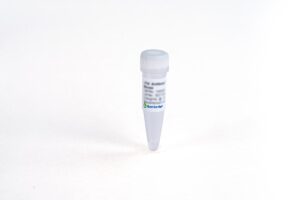
Anti-Human IgM mu Chain (M3HC)
$5,430.30 Add to cart View Product DetailsHuman IgM is an abundant human immunoglobulin in plasma. It exists as pentamer with molecular weight of about 900 kDa, or as hexamer with molecular weight of about 1050 kDa. The mu heavy chain of IgM includes four distinct constant region domains. Testing for IgM-class antibodies is useful in the diagnosis of infection.
-

Anti-Müllerian hormone (AMH) Antibody (38C9), mAb, Mouse
$261.34 Add to cart View Product DetailsAnti-Müllerian hormone (AMH) is a glycoprotein dimer. It is a member of the transforming growth factor-β superfamily. AMH is a hormone produced by small follicles in the ovary. It is a novel fertility marker to assess ovarian reserve levels.
-

Anti-Müllerian hormone (AMH) Antibody (38C9), mAb, Mouse
$2,613.38 Add to cart View Product DetailsAnti-Müllerian hormone (AMH) is a glycoprotein dimer. It is a member of the transforming growth factor-β superfamily. AMH is a hormone produced by small follicles in the ovary. It is a novel fertility marker to assess ovarian reserve levels.
-

Anti-Müllerian hormone (AMH) Antibody (38C9), mAb, Mouse
$22,252.50 Add to cart View Product DetailsAnti-Müllerian hormone (AMH) is a glycoprotein dimer. It is a member of the transforming growth factor-β superfamily. AMH is a hormone produced by small follicles in the ovary. It is a novel fertility marker to assess ovarian reserve levels.
-

Anti-Müllerian hormone (AMH) Antibody (39D7), mAb, Mouse
$261.34 Add to cart View Product DetailsAnti-Müllerian hormone (AMH) is a glycoprotein dimer. It is a member of the transforming growth factor-β superfamily. AMH is a hormone produced by small follicles in the ovary. It is a novel fertility marker to assess ovarian reserve levels.
-

Anti-Müllerian hormone (AMH) Antibody (39D7), mAb, Mouse
$2,613.38 Add to cart View Product DetailsAnti-Müllerian hormone (AMH) is a glycoprotein dimer. It is a member of the transforming growth factor-β superfamily. AMH is a hormone produced by small follicles in the ovary. It is a novel fertility marker to assess ovarian reserve levels.
-

Anti-Müllerian hormone (AMH) Antibody (39D7), mAb, Mouse
$22,252.50 Add to cart View Product DetailsAnti-Müllerian hormone (AMH) is a glycoprotein dimer. It is a member of the transforming growth factor-β superfamily. AMH is a hormone produced by small follicles in the ovary. It is a novel fertility marker to assess ovarian reserve levels.
-
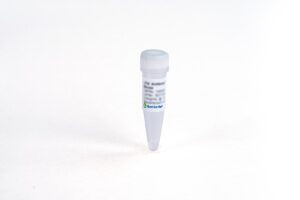
Anti-Müllerian hormone (AMH) Antibody (A10C27), mAb, Mouse
$265.65 Add to cart View Product DetailsAnti-Müllerian hormone (AMH) is a glycoprotein dimer. It is a member of the transforming growth factor-β superfamily. AMH is a hormone produced by small follicles in the ovary. It is a novel fertility marker to assess ovarian reserve levels.
-

Anti-Müllerian hormone (AMH) Antibody (A10C27), mAb, Mouse
$2,656.50 Add to cart View Product DetailsAnti-Müllerian hormone (AMH) is a glycoprotein dimer. It is a member of the transforming growth factor-β superfamily. AMH is a hormone produced by small follicles in the ovary. It is a novel fertility marker to assess ovarian reserve levels.
-

Anti-Müllerian hormone (AMH) Antibody (A10C27), mAb, Mouse
$22,580.25 Add to cart View Product DetailsAnti-Müllerian hormone (AMH) is a glycoprotein dimer. It is a member of the transforming growth factor-β superfamily. AMH is a hormone produced by small follicles in the ovary. It is a novel fertility marker to assess ovarian reserve levels.
-
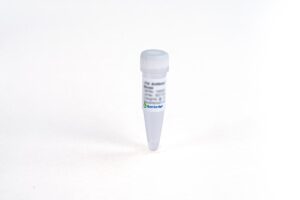
Anti-Müllerian hormone (AMH) Antibody (A9C27), mAb, Mouse
$265.65 Add to cart View Product DetailsAnti-Müllerian hormone (AMH) is a glycoprotein dimer. It is a member of the transforming growth factor-β superfamily. AMH is a hormone produced by small follicles in the ovary. It is a novel fertility marker to assess ovarian reserve levels.
-

Anti-Müllerian hormone (AMH) Antibody (A9C27), mAb, Mouse
$2,656.50 Add to cart View Product DetailsAnti-Müllerian hormone (AMH) is a glycoprotein dimer. It is a member of the transforming growth factor-β superfamily. AMH is a hormone produced by small follicles in the ovary. It is a novel fertility marker to assess ovarian reserve levels.
-

Anti-Müllerian hormone (AMH) Antibody (A9C27), mAb, Mouse
$22,580.25 Add to cart View Product DetailsAnti-Müllerian hormone (AMH) is a glycoprotein dimer. It is a member of the transforming growth factor-β superfamily. AMH is a hormone produced by small follicles in the ovary. It is a novel fertility marker to assess ovarian reserve levels.
-

Beta-amyloid (1-40) Antibody (A40), mAb, Mouse
$382.95 Add to cart View Product DetailsBeta-amyloid (1-40) Antibody (A40), mAb, Mouse
-

Beta-amyloid (1-40) Antibody (A40), mAb, Mouse
$3,829.50 Add to cart View Product DetailsBeta-amyloid (1-40) Antibody (A40), mAb, Mouse
-
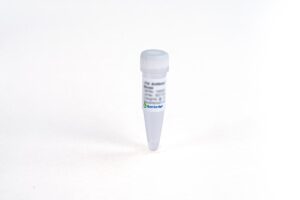
Beta-amyloid (1-40) Antibody (A40), mAb, Mouse
$32,583.53 Add to cart View Product DetailsBeta-amyloid (1-40) Antibody (A40), mAb, Mouse
-

Beta-amyloid (1-42) Antibody (25G13), mAb, Mouse
$382.95 Add to cart View Product DetailsBeta-amyloid (1-42) Antibody (25G13), mAb, Mouse
